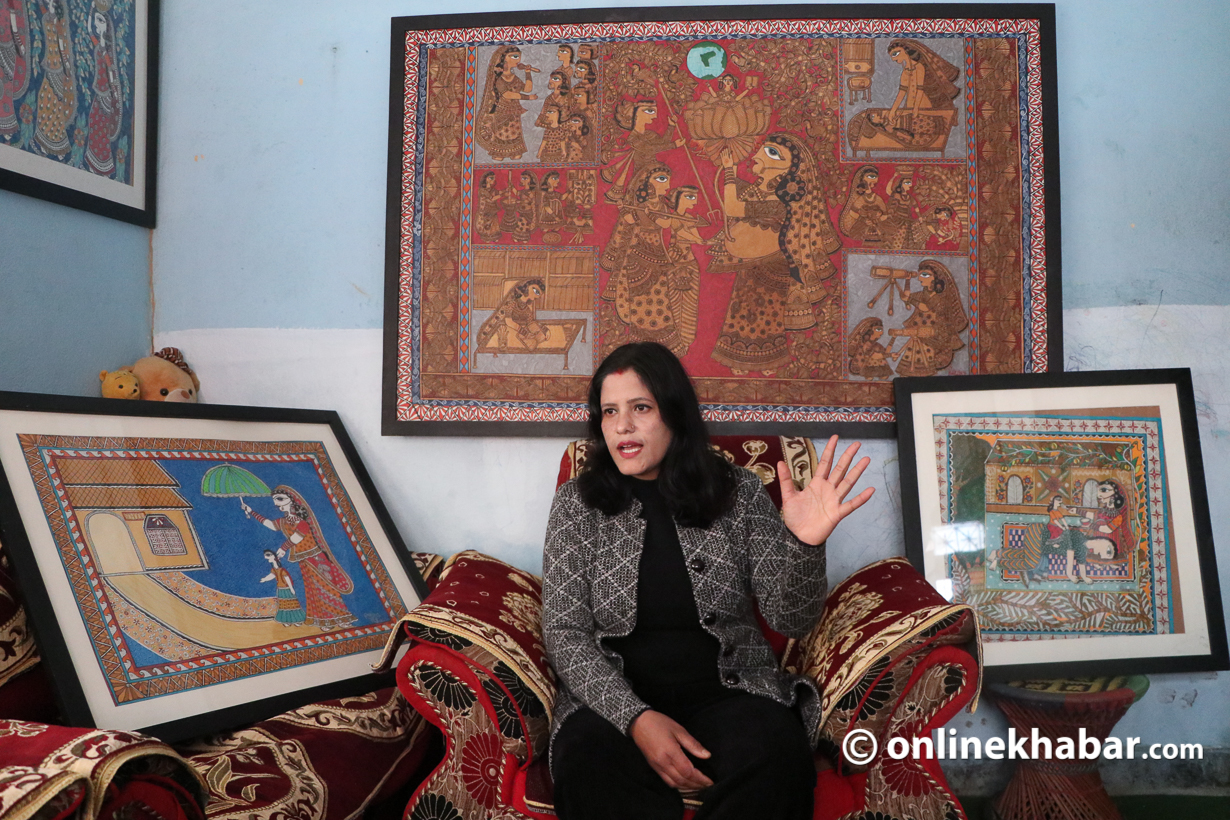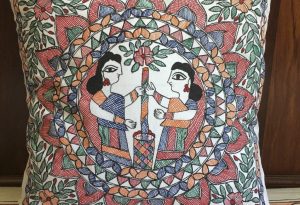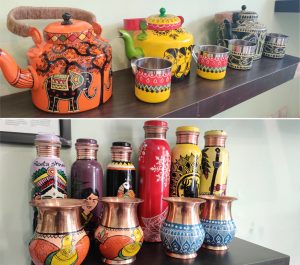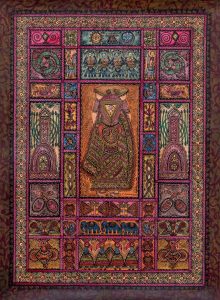
When artist Ranju Yadav was in grade 9, a woman in her neighbourhood was killed by a family member because she did not bring enough dowry after marriage. Learning about the incident traumatised her. She wanted to pour out this trauma somewhere, but at the time she had no idea how. For much of her life, the incident haunted her as she looked for means to express it.
It was not until 13 years ago that she finally got a chance to do so. It came in the form of Mithila art which helped her express the feelings inside. That liberated her and since then there has been no looking back for Yadav.
Ranju Yadav, a recipient of a national award, has innovatively transformed the traditional Mithila art, a folk art originating from the Mithila region. Traditionally, this art form is used to adorn houses and their surroundings, predominantly crafted by local women during religious occasions such as Chhath Puja and Ekadashi. However, Yadav has pushed beyond these traditional confines, pioneering a unique approach to the art form.
“Our society has various social evils and I want to raise my voice against those evil things through art,” says Yadav.
Social impact through art

Ranju Yadav’s artwork revolves around the issues of dowry, child marriage, untouchability, female feticide and other gender-based violence.
Yadav feels content with whatever she has been doing with the folk art style, not just because it has allowed her to express her voice against bad social practices but her art has also been helping to create a positive change in the society. Yadav has witnessed that her artwork has effectively made people aware.
She recalls her solo exhibition in 2019, Colours of Change, at the Nepal Art Council where her 29 paintings, depicting social evils were exhibited. The solo exhibition was visited by many people of Terai. One of the paintings, which had the head of a groom in the bull’s body, garnered the attention of many visitors. Through her paintings, Yadav aims to convey a powerful message: that individuals who accept dowry are perceived as foolish in Nepali society, often likened to bulls (Goru) when exhibiting such behaviour.
That painting prompted many men to walk up to Yadav telling her they would not accept dowry.
“This type of change is what makes me happy,” she says.
Yadav feels her works are gradually creating an impact on people and society as a whole, and things like this motivate her to come up with more content that holds a strong social message.
Going back to her root

Ranju Yadav now wants to exhibit an exhibition in the Tarai region, an area plagued by social evils such as child marriage, dowry, and female feticide. She intends to shed light on these deep-rooted issues in the hopes that the local population will become more aware of the detrimental practices they have been perpetuating for generations.
“One painting can be equal to a thousand words,” she says.
Her solo exhibition also had a painting that satirised the political leaders. In one of her paintings, the political leaders are observing the flood victims from the helicopter. She named the painting Disaster Tourism. The painting garnered significant appreciation from various audiences, including politicians. Remarkably, political figures such as Babu Ram Bhattarai and Pradip Gyawali shared Yadav’s artwork on their social media platforms, indicating a positive reception even from within the political sphere.
Her paintings also grabbed the attention of the then-Switzerland envoy to Nepal, Elisabeth Von Capeller. The Swiss envoy provided her with an opportunity for another solo exhibition on Swiss National Day. At that exhibition visitors from various international organisations appreciated her works and motivated her to do more such works.
Global recognition

Ranju Yadav’s paintings are not confined to Nepal; they have also been exhibited outside the country. For instance, she participated in the Karnaphuli Folk Triennale in Bangladesh, the International Art Exhibition in Myanmar, the Nepal Art Fair in Bangladesh and the SAARC exhibition in Maldives.
“I have a dream to promote the Mithila in every nook and corner of the world,” says Yadav.
Although Yavad has received remarkable achievements all these years through her painting skills, it has also been a tough ride for her.
She remembers how people during her initial days as a professional Mithila artist used to demotivate her.
“We live in a society where people seek overnight success,” says Yadav. Initially, people used to demotivate me by telling me I would earn nothing by becoming an artist.”
Despite initial scepticism, Yadav has defied all odds and achieved financial independence. However, her success is not solely attributed to her efforts. The encouragement she received from positive feedback on her work, coupled with unwavering support from her family members, played a pivotal role in her journey. Furthermore, her passion for art served as a driving force, motivating her to overcome challenges and pursue her goals with determination.
“I am passionate about art,” she says.
Coming from a region where art education is not widely recognised, Yadav is deeply concerned about the plight of young individuals aspiring to pursue art as a career. She acknowledges the lack of support these youths face from both their families and society at large. This concern stems from her own experiences and the challenges she encountered while establishing herself in the art world.
“We need to belive in ourselves. If we do that, we can create significant changes,” says Yadav.























